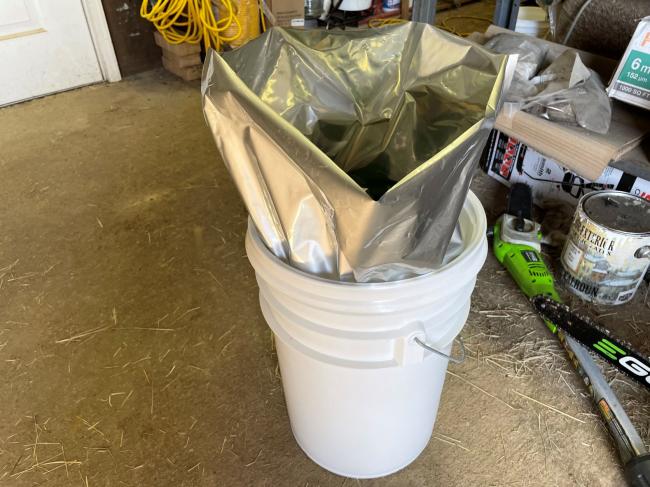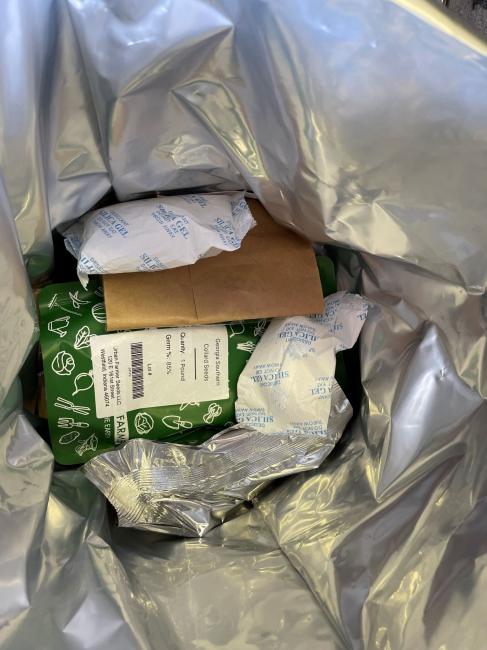Survival Gardening … Make your own seed vault
When I first started prepping, I knew how important it would be to have plenty of garden seed on hand in case of a severe crisis. So I would purchase seed vaults online that had lots of seed, could store a long time and had lots of variety. However the problem with these commercially made seed vaults is that that contain all sorts of varieties that probably wouldn’t do well in my specific climate and location. I knew a lot of the seed would not do well here.
So about the same time that I started putting staple foods in my own long term storage, I decided to do the same with garden seed. For me, long term storage means the items are inside sealed Mylar bags with either desiccants or oxygen absorbers inside. This bag was then inside a sealed 5-6 gallon plastic container. These containers are stored inside a prepper room I built in my upper barn that has its own AC unit, so the room stays in the 60s or less year round.
Now I understand gardens seed will not last anywhere near as long as my food items. Things like dried beans, rice, wheat berries, etc. can last 30+ years in such conditions. Most seed would last only a few years. So each year, I put up a new container of garden seed. Each container (seed vault) contains the basic garden seed that could sustain my family for a year, along with fruits & berries from my orchard, catfish from the pond & wild game in the woods. These seed are varieties I grow each and every year, so I know they do well in my specific location. I don’t have anywhere near the number of varieties found in commercial seed vaults, but every seed I have are varieties that grow here with minimal to no fertilizers & other garden chemicals… even though I keep more than a year’s supply of such in storage.
My philosophy on survival gardening is to keep it simple. I also wish to extend the growing season as long as possible, which is pretty long here in north Mississippi. So my seed vaults all contain cool weather varieties. Tops for me are collard greens. They grow early spring & late fall & produce huge crops of nutrient packed leaves. I normally include some English peas, which also are cool loving, but this year I put them in my freezer in the barn, for very long term storage. For warm weather varieties, my core crops are the three sisters, grown for ages by native Americans all over this country. They include corn, pole beans & winter squash. They are called companion plants because they all assist the others. Corn grows tall & strong, and provides the support for the pole bean vines to grow on. The pole beans, being a legume, fix nitrogen on their roots & provide natural fertilizer for the corn. The winter squash vines stay low to the grown & provide ground cover to help maintain soil moisture & to smother weeds.
I always include amaranth in my seed stores and I feel amaranth is probably the most valuable variety for survival gardening. It was a staple crop of the Maya civilization in central America. Its leaves are super nutritious as are its seed. Each plant can produce a half pound of seed each and the seed are tiny. A single plant will produce hundreds of thousands of seed. Amaranth in its native form, which I have growing wild on my property, is a weed. You almost can’t kill it. Across the country farmers fight it because it grows so well & reproduces so fast. This family trait makes the commercial varieties so easy to grow. They handle drought well, as do most weeds. Cut the top half of the plant off, and in a few weeks it will have regrown. These plants can get over 6 feet tall. The seed can be ground into flour or eaten as a porridge.
So here is what is in this year’s seed vault:
10 lbs Rattlesnake pole beans 5 lbs Tennessee Red Cob corn, 5 lbs Truckers Favorite corn
1 lb Georgia Southern collards 1/4 lb Seminole pumpkins 1/4 lb Green Callallo amaranth
Seed count is as follows: corn: 12,800 pole beans: 11,000 Seminole pumpkin: 1100
Georgia Southern collards: 100,000 Green Callallo amaranth: 150,000
-
Comments (23)
-










